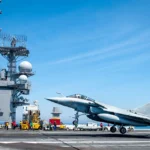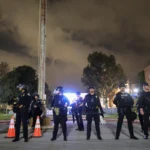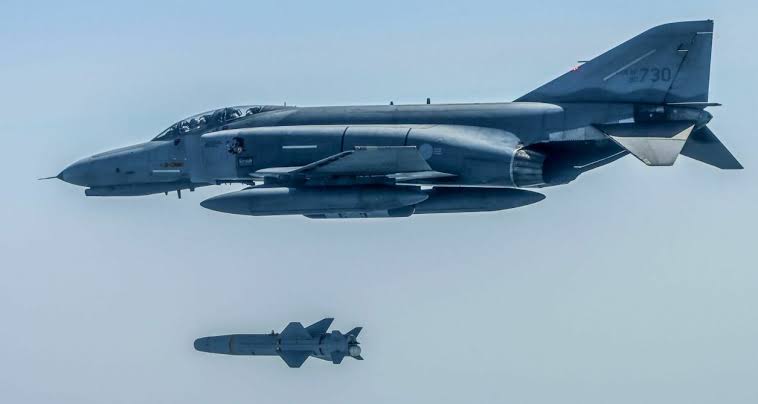
South Korea’s acquisition of additional F-35A fighters and the possible arrival of the Russian Su-35S fighters for the Islamic Republic of Iran Air Force (IRIAF) mark the end of the iconic F-4E Phantom II jets in its inventories. The Republic of Korea Air Force (ROKAF) officially announced the retirement of its F-4s earlier this month, leaving Iran, Turkey, and Greece as the sole users of the iconic jet.
While Greece and Turkey are US allies, accessing spares and components to maintain the fighter is easy. The same, however, is not true for Iran.
Tehran resorted to smuggling spares to circumvent US sanctions since the late 1980s through small and intermediary aviation services and engineering companies by US-based Iranian businessmen until they were busted by US law enforcement agencies by the 2000s.
Turkey and Greece are regional Mediterranean rivals, often engaging in occasional muscle flexing. They also have the same planes in their fleet, such as F-16s and F-4s.
Meanwhile, Iranian F-4s will further assume a secondary role in operations, assuming the Russian Su-35s reach the country. These roles would be highly restricted with less active flying schedules.
South Korea Retiring Its F-4s, Expects More F-35s
South Korea’s F-4E Phantom II performed its final live-fire exercise after 55 years of service and will be retired on June 7, along with the AGM-142 “Pop-eye” missiles.
The assets were vital to the ROK’s air defense against North Korea. They were presumably assigned for aerial target surveillance of enemy aircraft, cruise and ballistic missiles, point defense, interceptor, and land-strike roles. The F-15 K Slam Eagles are planned to undertake the majority of the frontline air dominance and deep-penetration functions.
During the drills, the F-4s also dropped Mk.82 free-fall bombs, collectively weighing 13,800kg, whereas a single munition weighs 226 kg. McDonnell Aircraft Corp. developed the F-4 in the 1950s for the US Navy as a bomber and interceptor. It took its maiden flight in 1958 and was then inducted into the US Air Force (USAF).
The aircraft saw active service in the Vietnam War against North Vietnamese MiG-21s, reconnaissance and ‘Wild Weasel’ missions, and missile firing at Iraqi radar sites during Operation Desert Storm in the early 1990s. The F-4s also saw service in the Israeli Air Force’s (IsAF) frontline fighter fleet, shooting down 17 Syrian and Egyptian MiG-21s between 1969 and 1973.According to reports, nearly 5,200 F-4s were produced between 1958 and 1979. The US military retired the aircraft in the early 1990s. The last American Phantom – a remotely controlled QF-4 aerial target – made its final flight on December 21, 2016, at Holloman Air Force Base in New Mexico.
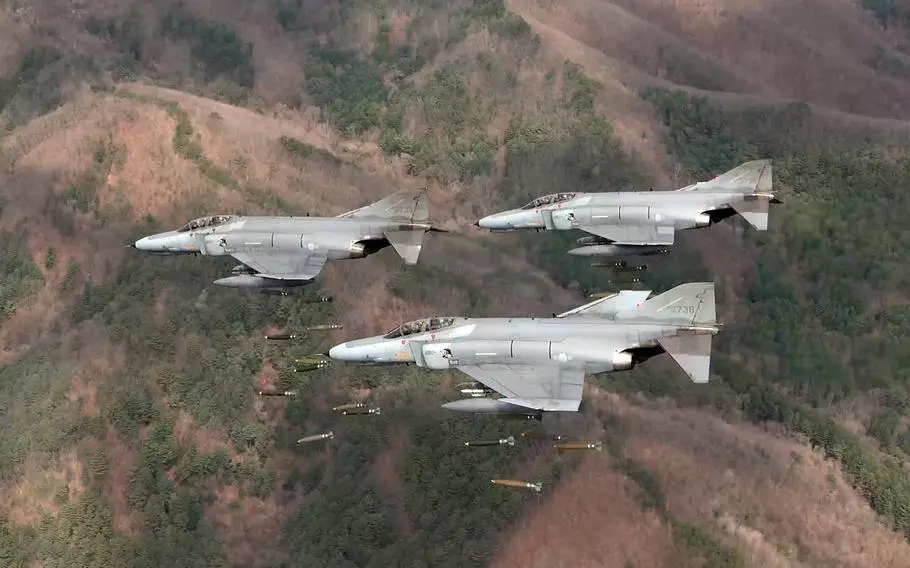
The F-4 was South Korea’s premier fighter from 1969 until 1994 when it began producing the homegrown KF-16, based on the US F-16 Fighting Falcon. At its peak, South Korea operated about 220 F-4s, with roughly ten remaining today. The retirement ceremony on June 7 is expected to be held at the Suwon Air Base.
The ROKAF is currently slated to have 25 additional F-35A jets after the State Department approved the $5.06 billion sale in September last year. The potential sale, which now goes to Congress for consideration, would also include 26 Pratt & Whitney F135-PW-100 engines for the aircraft, an upgrade to the Block 4 standard, cryptographic appliques, and electronic warfare support.
If the final deal goes through, the number of F-35As in the ROKAF fleet will swell to 65 units, giving it a massive qualitative and quantitative edge over the North Korean Air Force that operates antiquated Russian MiG-29 and MiG-21 fighters.
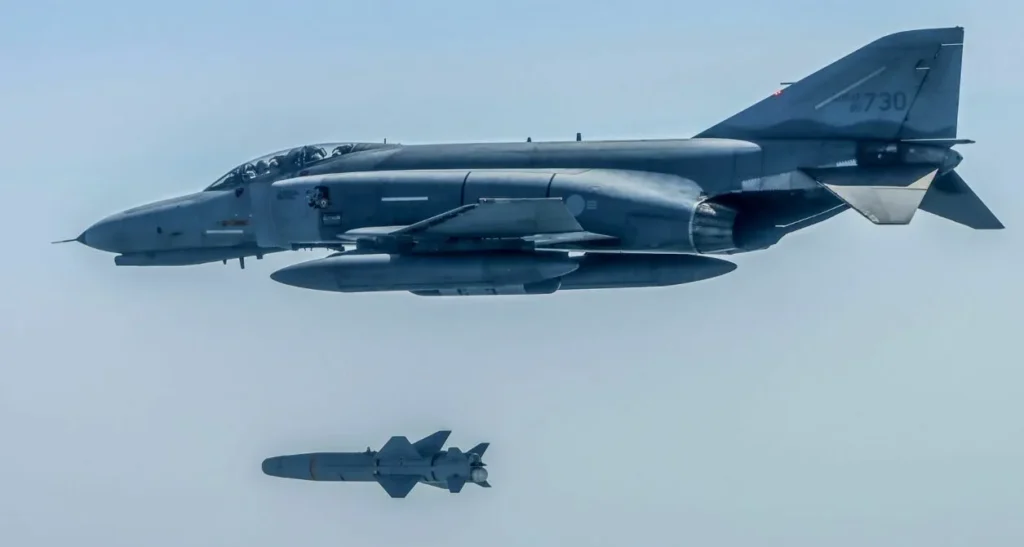
Turkish F-4s Need To Retire
The Turkish Air Force will continue to operate its F-4E Terminator jets until the 2030s despite the severe maintenance, logistical, and airframe maintenance issues.
Speaking’s in the backdrop of an F-4 losing an external drop tank while flying over the capital city on September 4 last year, then Turkish Chief of General Staff Ismail Hakki Pekin told local media, “The broken part is not one that impacts the plane’s operation that much. It could be attributed to metal fatigue. Despite modernization efforts, these are aging aircraft that have been in service for several years.”Pekin was most likely referring to an Israeli project to modernize Turkish Phantoms beginning in the late 1990s. Under that $632 million deal with Israel Aerospace Industries (IAI), Israeli technicians upgraded 54 of Turkey’s 200-strong F-4E fleet to a new configuration known as Terminator 2020.
Hellenic Air Force F-4
The F-4E Phantom IIs entered service with the Greek HAF in 1974 under the “Peace Icarus” program. HAF has upgraded 36 “Hellenic Phantoms” with advanced electronics, extending their operational life.
They are based at Andrabida Air Base (117 Combat Wing, 338 and 339 Squadrons) and Larissa Air Base (110 Combat Wing, 337 and 348 Squadrons). Following their overhaul, all HAF F-4Es are painted in the “Aegean Ghost” camouflage, while all RF-4Es wear the “Vietnam” camouflage.
IRIAF ‘Maintenance Nightmare’ F-4 Phantoms
Former US administrations in the late 1960s and early 1970s supported the Shah of Iran against the Soviet Union during the Cold War. They delivered 32 F-4Ds, 177 F-4Es, and 16 RF-4Es.
But, the F-4s and the F-14s that reached the IRIAF (the IRIAF came into being when the former Imperial Iranian Air Force or the IIAF was renamed following the Islamic Revolution in Iran in February 1979) were immediately cut off from supplies and spares following the Islamic Revolution in 1979.
During the Iran-Iraq War in the 1980s, Tehran invested heavily in reverse engineering and developed components for its American fighter jets. To maintain this rapidly aging fleet, Iran uses homegrown parts like glide weapons, improvised electric components, and anti-ship missiles, but with limited success.

A Defense Intelligence Agency (DIA) report claimed that the Iranian Air Force’s possible missions are centered around “air intercept, ground attack, and close air support with some aircraft capable of mid-air refueling…The IRIAF’s F-4 serves as Iran’s primary attack aircraft,” the DIA noted.
“To supplement its long-range strike capabilities, Iran could also attempt to use its regional proxies and limited air strike capability to attack an adversary’s critical infrastructure. Iran’s F-4 Phantoms could (be used) to attack its regional adversaries. However, these older platforms would be more vulnerable to air defenses than modern combat aircraft,” the report added.
The EurAsian Times, too, had analyzed how IRIAF might employ its F-4s to take off unannounced from its underground bases without warning for surprise ground attack missions, coupled with a host of other complementing long-range land-fired anti-surface missile fires to overwhelm enemy decision-making.


